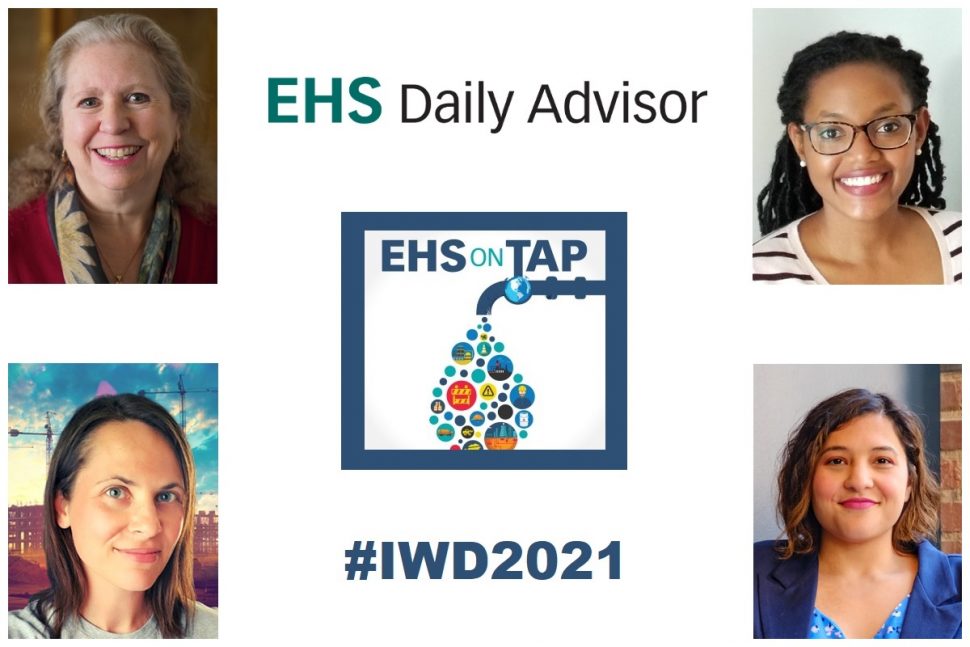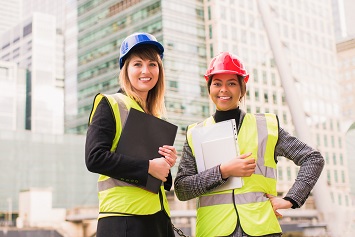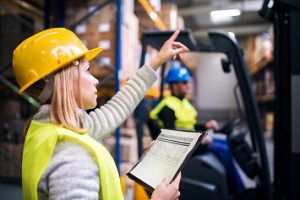To mark International Women’s Day, a global event created to celebrate (and elevate) the social, economic, cultural, and political achievements of women that also serves as a call to action for accelerating women’s equality, EHS on Tap sat down with four women who have found great success in the environment, health, and safety (EHS) field, each of whom has also been an advisory committee member for the American Society of Safety Professionals’ (ASSP) Women in Safety Excellence (WISE) common interest group. Listen in to our discussion above, or read the transcript below!
Justin Scace: Hello, everyone, and welcome to EHS on Tap. I’m your host Justin Scace, senior editor of the EHS Daily Advisor. Now today, March 8, is International Women’s Day, a global event for celebrating the social, economic, cultural, and political achievements of women that also serves as a call to action for accelerating women’s equality.
To mark the occasion, EHS on Tap is sitting down with four women who have found great success in the EHS field, each of whom has also been an advisory committee member for the American Society of Safety Professionals Women in Safety Excellence, or WISE, common interest group.
So let’s meet our guests and dive into the conversation. First up, Adele Abrams is the president of the Law Office of Adele L. Abrams PC and Professional Development Chair of the WISE Advisory Committee. Welcome, Adele.
Adele Abrams: Thank you.
Justin Scace: Next, we are joined by Lindsay Bell, who is a regional health and safety manager at Solvay Novecare and a past membership chair for WISE. Welcome to you, Lindsay.
Lindsay Bell: Good morning.
Justin Scace: Also with us today is Abby Ferri, a senior risk control consultant for Gallagher and the nominations and elections chair of the WISE Advisory Committee. Abby, welcome.
Abby Ferri: Thank you.
Justin Scace: Next, joining us on the show today is Camille Oakes, the president and CEO of Better Safety and assistant administrator for WISE. Welcome, Camille.
Camille Oakes: Thanks, Justin. Happy to be here.
Justin Scace: Yes, thank you, all, and thanks to all four of you for being here today. To start things off, could each of you talk a little bit about your individual experiences as women in environment, health, and safety careers, including the challenges and opportunities that you’re seeing in the profession?
Abby Ferri: Do you want to call on somebody?
Adele Abrams: Well, I’ll jump in here. Adele. Going in alphabetical order, Adele Abrams here. My path in this was a very different one, I think, from a lot of safety professionals in that I came at it through the writing and actually put my journalism degree to use initially. As a writer with associations in the D.C. area—this is in the early ’80s I’m talking about now—I was told, “OK, well, you write, so you can write our OSHA comments.” Like many before me, I said “What’s an OSHA?” and really did a crash course.
So I remember in those early days, the very first one I worked on was the indoor air quality rule, which they never did end up adopting all these years later, and the HazCom standard. I got into the construction field in the mid-’80s, and so I was commenting and working on not only HazCom but also work zone safety. I was in the highway and heavy construction sector.
But one of the things was that I was always kind of a standout in the sense that I would be the only woman at most of the meetings that I went to. Then I made an even further break in the late ’80s and went into the mining industry, and I am a certified mine safety professional. So I started doing a deep dive on all things MSHA, which is the Mine Safety and Health Administration, eventually becoming certified to do its noise and dust sampling and becoming an MSHA proof trainer.
But then, I got the bright idea to go to law school at night, and so I did that while I was doing safety projects during the day. And 25 years ago now, I went into practice in the occupational safety and health, mine safety, and environmental safety and health field. So I still do a lot of training. I do consulting, and I do program development in the safety area. But I also defend employers in OSHA and MSHA cases, and now more recently, I’ve been getting involved representing employees in some whistleblower cases—a little bit of a switch there—and whistleblower in the safety and health arena under Section 11(c) of the OSH Act and under Section 105(c) of the Mine Act.
So as the Grateful Dead would say, “What a long, strange trip it’s been,” and I can say that because before all of that, I was a rock-and-roll disc jockey, so this is actually my third career, if you want to be technical about it.
Camille Oakes: What?
Abby Ferri: That’s awesome.
Camille Oakes: That is awesome.
Adele Abrams: That’s true.
Abby Ferri: I want to pick up something Adele mentioned about being the only woman. I started in safety about 18 years ago, and even back then, I was the only woman in some of the spaces that I was in, especially with construction because I started out in construction. So back then, I didn’t really think much of it. I kind of was always pretty sporty as a kid and sometimes hung out with the boys more than girls, so it was just kind of my nature.
But as my career went on, I thought, “Well, there should be more women in this field because it’s actually awesome,” and I feel that women are pretty well-suited to just the profession of safety in general. And when people would ask me the question “What’s it like to be a woman in safety?” I’d be like, “Well, I don’t really know anything different. What’s it like to be a man in safety?” So everyone has their own perspective. But I know what people are getting at because a lot of the careers that we serve are very male-populated careers—not so much male-dominated but male-populated. Right? There are a ton of guys who do that work.
So yeah, I’ve always felt that I was well-suited for the work. I was able to establish a rapport with the workers, and for some reason, even at a young age, they would listen to me, and I listened to them and came up with things that I could help them out with to kind of endear myself to the workers. For me, that’s just always been the key. So I don’t know if maybe that’s like a woman or women-specific trait to try to establish that rapport with people right off the bat, but if it is, it’s definitely something that has served me well in the profession.
Lindsay Bell: Now, this is Lindsay speaking. I think what’s interesting is my first two jobs, actually, were … there were a lot of women I worked with. So my first role, I did a co-op, and this company had a relatively robust safety team. And so I was in the training group, specifically the EHS training group, and it was all women, and there were five of us. So it was interesting. Of course, it was training, so it’s considered, unfortunately, a “soft skill.” I’m doing air quotes. But it was all women, and we did all teaching.
And then my next job was in manufacturing, but it was a large plant—over 900 people—and we had two safety groups, and there were four women. Out of the six safety professionals in the group, four of us were women, and we would … It was in Utah, so we would go to Utah Safety Council, and it had a women in safety group, and we would go every month. So my first two roles actually had a lot of women, and that’s kind of how I got introduced really to ASSP and even through the National Safety Council (NSC) and through mentorship and everything like that.
So I think I was just really fortunate to come into it that way, and I didn’t really have the experience of being the only woman until after that. So I was kind of a few years into my career and fortunately had some really strong mentors like Abby at that point in my life. So it was nice. I had people to talk to about it when I did start to face those challenges.
Camille Oakes: This is Camille. When I started, I was sort of an internal consultant, so it was … basically, I’d fly to an airport, do an inspection, give them their feedback, and leave. I experienced more kind of pushback with my age, which I’m sure is all wrapped up in age, gender, color, and all of that together. But I really had, when you think of the negative experience of a woman in a male-populated industry, that happened when I became on-site in a distribution center, and it was, I mean, nonstop. Particularly when I started having kids, when I got engaged, and when I became a mother, it was harassment and negative comments and even the things that would be considered a compliment; it was comments on my appearance, and it was comments on basically every decision that I made.
I remember specifically where I kind of gained a lot of confidence was we had an incident when a truck in our parking lot turned and ran over a ramp and spilled its diesel all over our dock area outside, and the hazmat crew came, and the first thing they did was turn to the older man, the oldest man in the area, with a collared shirt; with keys on his belt; and who was bald and clearly looked like the guy in charge, and he turned to me. They started asking him questions, and he turned to me silently and then pointed and said, “I don’t know. Ask her.” And he looked terrified.
And I realized, “Oh, 25-year-old me at this point, no one around here would think I’m in charge, but very clearly I am.” And that kind of directed … I knew the answers, and I knew what to do, but the assumption was that he would. So I was thankful for him to even be able to admit “Yeah, I don’t know. Ask her.” And it’s kind of been that way since. It’s still where people turn and find the oldest man in the group and assume that he’s in charge, and then they point at me—my old look of shock.
Abby Ferri: That’s a really good point.
Adele Abrams: Yeah. I think one thing I wanted to follow up on is I think there’s this distinction, and I’ve experienced this, as well, between the woman safety professional who comes in as a consultant, as a subject matter expert, and the level of kind of respect and lack of harassment. When I’m hired as an attorney, usually, my client is in the jackpot at that point, and they’re desperate to hear what I have to say and follow the advice I have.
Abby, as someone who’s been a consultant and also as an insurance advisor, we were looked to as kind of the pros from Dover, to pull a phrase, and so we’re not really subject to that day-to-day harassment. They don’t know my background. They don’t know if I’m a grandmother. They don’t know what my history has been in terms of personal life. Whereas if you were an embedded safety professional, I think there was a much higher degree, especially in the nonconventional industries of harassment. I mean, I’m the past president of the national group Women In Mining, and my experience as a woman in mining, coming in either as an association professional or later as an attorney or a trainer, is much different from the women who are working alongside the men as laborers or equipment operators and what I hear as feedback from them.
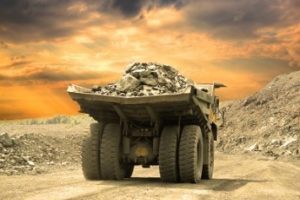 In terms of what is still a very harsh work environment, you think of that movie North Country, which was about the taconite mining industry and the first class action on the basis of sexual harassment, and things have not changed a whole lot. I’ve been up in the Iron Range. Things have not changed very much, and so there is a lot of progress that still needs to be done. But I think there has been a lot of movement and accepting women as the subject matter experts. I do expert testimony in the mine safety area, and you would not have seen that 20 years ago.
In terms of what is still a very harsh work environment, you think of that movie North Country, which was about the taconite mining industry and the first class action on the basis of sexual harassment, and things have not changed a whole lot. I’ve been up in the Iron Range. Things have not changed very much, and so there is a lot of progress that still needs to be done. But I think there has been a lot of movement and accepting women as the subject matter experts. I do expert testimony in the mine safety area, and you would not have seen that 20 years ago.
But I think the problem is still for the women who are part of the workforce and perhaps are managing safety and having to tell the men what to do and how to do it and call them out when they are not following the appropriate protocols.
Justin Scace: Absolutely. Like all of you have mentioned, progress has been made, but there’s a lot more progress to be done, especially in terms of increasing the presence of women in traditionally male-populated, as you put it, industries. But in industries where safety also takes center stage—things like construction, mining, and energy—increasing their presence may also create unique risks to women in these particular occupations. What do you all see as the biggest challenges in this area?
Abby Ferri: I just wanted to piggyback on something Adele and Camille both mentioned real quick about the harassment and the comments and just add kind of food for thought. I know for myself personally, when I first started in the career, there were a lot of comments and things that I just took in stride as thinking that was just part of the job. And so I think something that has changed is that there are more apparent pathways for people to be able to report things like that, and women may feel more empowered in some settings also to bring those things up, as in we’re not going to put up with that type of thing in our workplace.
And the other cool thing is men in our industry and in the industries we serve, like Camille mentioned, being more of an ally; it’s even just powerful for that older, experienced male who’s not in charge to say, “No, she’s in charge,” and that’s powerful to have people speak up like that. So I just wanted to mention that before we got too far.
Lindsay Bell: Yeah, exactly. I mean, I see a lot more of that—men sticking up for me more, especially if I get talked over in meetings or if we’re standing somewhere and the example, like Camille said, where I’m the one in charge and clearly, they will ignore me and speak to everyone else who’s standing there, and someone will just blatantly cut them off and say, “Well, Lindsay is the one in charge,” or they’ll introduce themselves to everyone, but I and someone else will interject and introduce me to them.
I think sometimes, with the representation, there’s this focus on getting more women into these groups. There’s “Oh, women are underrepresented,” and there’s not enough focus on “OK, so what happens when we put the women there? Are we ready to receive them?” So we have to think about that, too, because sometimes, you are kind of throwing people to the wolves, and you got to think about that when you want to talk about getting underrepresented groups into different organizations and different industries.
Adele Abrams: Yeah. I’m serving on a working group right now with the National Safety Council on diversity, equity, and inclusion (DEI) and looking at safety issues that pertain to DEI—to your point, whether women in nontraditional industries are at greater risk personally from a safety perspective. I’m actually speaking on this later this month, looking at the transportation sector, in particular transportation and construction, and the short answer is yes, women do get injured at higher rates. Very often, they’re in [inaudible 00:16:48] positions that put them at a higher risk, and I want to let my colleagues here speak to that. But regarding ill-fitting personal protective equipment (PPE) and lack of availability of appropriate PPE, even if it’s on the market, if the employer only buys XL and XXL safety harnesses, you’re going to have some issues there. So those are a number of the things.
But I wanted to make this point because this reflects off of, I think, what Lindsay was saying and Camille; there is an effort being made to bring more women into these professions and these job occupations. But diversity is one thing. It’s like being invited to the party. Inclusion is being asked to dance. I heard that phrase as part of our work in this area, and that really resonated with me because we can be invited to the party, but we may end up being wallflowers, and we may not be included in the key meetings and venturing and may not get equivalent oversight; really, again, just the onboarding process may be different for women than it is for men.
That lays the groundwork right from the outset that women may or are going to have less protection when it comes to safety because they’re not going to have that full mentoring and immersion and training that the equivalent men would get who are similarly situated and hired.
Lindsay Bell: I think that we also have to talk about that as we spend time as a culture now talking about women in the workplace and women in leadership. I think we can easily put women into one category. We allow men to be lots of different things, but then there are women. I’ve used this example before. I think we’ve talked about it at WISE before, but I heard someone say, “I’m not a pink nail polish kind of girl,” and the idea that in order to be a woman in safety, you must identify as masculine. You can’t wear nail polish; you can’t wear lipstick; you can’t be “girly”—also using air quotes; you can’t be “girly”; and you can’t fit. There is only one way to be a woman in safety. So if we’re talking about representation, I think we also have to talk about the representation of different kinds of women because we’re not all the same.
So if we get in a board room and we’re making a decision, it can’t be all the same kinds of women with the same personality who all fit one mold. Sheryl Sandberg wrote Lean In. I’m sure everybody’s heard of it, and she talks about how we have to both push from the inside and get inside in the first place. So it’s almost like we have to fit a mold to get there and then change it when we are there. But I don’t want to say that to be a woman in safety, you must X. The representation of all women is really going to be the powerful tool—that we’re all different and we all have to be different in that role.
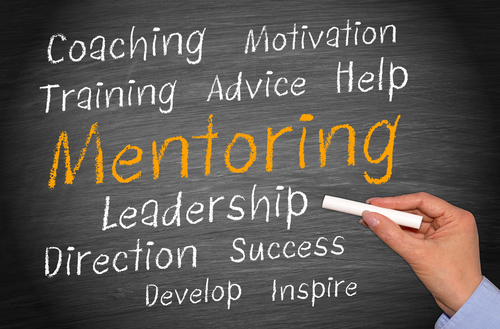 Adele Abrams: Yeah. I think that’s an excellent point.
Adele Abrams: Yeah. I think that’s an excellent point.
Justin Scace: I’d like to talk a little bit about something that Adele briefly touched upon. In EHS, just as in other industries, professional development and mentorship are key to growth and success. So what do you perceive as the differences between mentoring programs where women serve as mentors to other women versus those professional development relationships that cross gender lines? What are the advantages of more women mentoring other women in safety?
Lindsay Bell: So Abby was my first mentor through WISE, and then I’ve had other male mentors through other groups, and I found that through mentorship with Abby, especially when we’re talking about problems that are specific to being a woman in safety and things that I was seeking guidance on that were specific to gender and gender roles and how that was affecting the workplace and how I need to approach problems or how, especially with communication and things or being talked over in meetings or issues of respect, she could kind of empathize a little bit more and talk about “This is how I navigated it, or this is how I approached this problem or communicated this effectively or said this more assertively or this, that, or the other.”
Whereas my male mentors approached things differently, and they’re like, “Oh, we’ll just do this,” and they just could not comprehend how I could not just do that or how my doing something in that way was not going to work for me because of some of the gender norms in the workplace. Now, I couldn’t just do that. That’s not how that was going to work for me. So there are definitely some interesting things there with mentorship and the approach to problem-solving and communication that definitely come a long way, and definitely, they also always want to solve the problem, and sometimes, I really just want to have a conversation, and I’m not really looking for a solution. And they were always very solutions-oriented versus sometimes just sharing experiences.
Adele Abrams: As one of the older women, I guess, in safety, I have served as a mentor through the WISE mentoring program when it first started out, and I found that having come up kind of in the bad old days, when I did encounter a lot of very blatant sexual harassment, even sexual assault at times in the workplace, I felt like, in a sense, people could bounce stuff off of me, and perhaps because of my employment law background, as well, sometimes people in mentoring and also just people I know—women in safety—might ask me for a little bit of legal advice kind of off the clock, off the cuff, in terms of whether this is something that rises to the level of being actionable, I guess, is a good way to put it. And so sometimes, the mentoring that I would offer would be more really in the HR field rather than the technical safety field.
Now, what I like to say is that I think it’s a street that runs both ways really, and being, again, an older safety professional, I’ve learned an awful lot from the younger women, some of whom are on this call here, about how to use social media and online training, and boy am I glad that I really did get some of that immersion before COVID-19 occurred because I might have been in a position where I wouldn’t have been able to continue my work remotely. And so I’m very grateful for what I’ve learned from the younger women who I’ve, in turn, worked with a bit over the years in various areas.
The thing with mentoring is—I wanted to say woman to woman versus woman to man, aside from the whole sexual tension issue, and we’ll leave that aside—that there are some people who still believe that men and women cannot work professionally together, much less be friends, without there being some other thing happening. And so that’s always something to watch out for when you are dealing with a man as a mentor. I like to think people have evolved a lot, but that’s not always the case. But I think with a woman mentor, you’re more free to say what you don’t know. Whereas for women, especially again, and my experience is always in primarily construction and mining, so it is unconventional, and it’s hard enough to get a foothold in there.
Then, if you start saying “Well, I don’t understand what this means” or “I don’t understand what that means,” there’s a real risk of saying, “Well, honey, you’re just not qualified to be in this industry if you don’t know what X is.” Whereas if you go to another woman in that profession, you can be a lot more open about whether it’s scaffolding design you don’t understand or roof holding in an underground soft mine; you want to be able to ask questions and get that information without feeling that, by expressing ignorance on a particular point, you’re putting your livelihood at risk.
Camille Oakes: Yeah, I think to both Lindsay’s and Adele’s point, there are things that we would not be able to just discuss with a male mentor, and there are things … it’s not necessarily that there might be some inappropriateness between a man and a woman in a mentor-mentee relationship, but it’s the appearance of it, and as women in the workplace, we take steps nonstop to make it look like our reputation looks one way measured in our communication, all of this. And if I go to lunch with a male mentor twice a week, people may get an idea, whether or not it’s true, but they may get an idea. So it’s just a little bit more risky to my reputation and whether people take me seriously, all of that. The risk seems higher.
But that being said, my mentors have all been male, and I have learned a tremendous, tremendous amount from them, and they have been incredibly helpful and have been ins to other parts of the organization that, because they are at that higher level, I probably wouldn’t have gotten, given that there were no women mentors at that level within my organization. I see the benefit of both, and I see the risks of one.
Lindsay Bell: Camille, I’ve always ensured that my mentors were not within my organization for that reason. I’ve always made sure that they don’t actually work with me. So one, I could be more candid, and then two, I could have that kind of closer relationship and not have to worry about any of those issues.
Camille Oakes: That’s a great idea. Yeah.
Justin Scace: If I could ask another question related to mentorship, is it time for women to be mentoring men, as well? Because I mean, in my experience as editor of the EHS Daily Advisor, I feel like I talk to a great many women in the safety profession, and I’m like, “They have so much to teach everyone that’s coming into the profession.” What about the other way, where it’s an experienced female safety professional mentoring new men in the profession, especially, so that maybe we could get rid of this harassing atmosphere that you’ve experienced in your own careers?
Abby Ferri: I like where your head’s at. That’s interesting. It’s funny, I’ve actually never really thought about that deliberately, and I’ll admit, I’ve personally felt responsible for mentoring young women in the fields, and I felt that that would be most impactful. But at my current position, I do have the opportunity to mentor young men in our fields, and maybe that’s something I should be taking more seriously and kind of taking things next level, too. It’s kind of like you’re creating those allies for our workplace through mentoring. So point taken. I’m going to do that.
Lindsay Bell: I think it’s coming. I think it’s just a numbers game. So when we talk about just the population of safety professionals that exists, there’s still currently fewer women than men. So I think as that starts to equalize, you’ll see it start happening. And so I really think it’s just numbers. It’s coming. It will happen.
Adele Abrams: I will say, I’m the head of my law firm, and the attorneys who work for me are safety professionals, as well. We’re kind of a boutique firm in that regard. But while many of the folks over the years, the last 20 years, whom I’ve hired already were established, I’ve hired some people, men and women, right out of law school, so I’ve done some mentoring in that regard because we have a unique area of practice with the OSHA and MSHA law, and they don’t teach that in law school.
And I have been able to see the difference. The women seem to really suck up the information that I try to share like a sponge and, again, seem to be more willing to ask questions like “How do I do something?” or “Am I doing this correctly?” or “Would you take a look at this for me?” Whereas the men I have mentored—the younger, newly minted attorneys—were, I think, a little bit more self-confident but also a little bit more resistant to hearing what I had to share. I hate to use the term “mansplaining.” But if I’ve been practicing for 20 years and you’ve been practicing for 0 years and you’re challenging me right out of the gate on my basic concepts, that makes for an interesting approach to mentoring, I suppose. In some cases, those worked out, and in some cases, they didn’t.
So for me, I’m just giving my own experience; it was harder for me to be a mentor to a young man coming into my field than it was for me to mentor a young woman similarly situated right out of law school. But it’s hard to say. Lawyers aren’t known for being really nice people. I hate to say that. So it could be an attitudinal thing that wouldn’t necessarily carry over on the safety and health side. I’d like to think that we’re not taught A-hole 101 in safety school the way we are in law school. I’m just kidding now.
Camille Oakes: I mean, I would agree. In my last position, I was a regional safety manager, and there were on-site safety professionals, and almost every one of them was male, and they were very, very skeptical. Just by nature of our position, I fell into that mentoring role for them, and they were very skeptical of any version of my method of “Here’s the best way to communicate with an operations person, and here’s what we want to focus on and what we don’t want to focus on.” They were very, very skeptical of this kind of, as Lindsay said, with air quotes, “soft skill” kind of method, particularly those who were joining safety coming out of the military. They had a very hard time adapting to this kind of communications-focused, holistic safety, that sort of thing when it had previously been you tell people what to do and they do it.
So I don’t know if it would have been better-received if it had been a male telling them that, if it was a post-military thing, or what, but the women I encountered were a lot more open to that kind of mind-set.
Justin Scace: So before we close today, I’d like to talk a little bit about the ASSP Common Interest Group in which you have all played a part—the Women in Safety Excellence, or WISE, group. What can you tell us about this group? What is its mission, how does it pursue it, and how can EHS professionals in our audience get involved?
Adele Abrams: I’ll go ahead and kick it off again. I was one of the original members of WISE, and I remember sitting in a very small conference room at one of the ASSE, at that time, conventions, and I think there were half a dozen of us maybe there. Looking at how it has grown to thousands of women now has just been so immensely rewarding, and so many of the people who were there in that first meeting are still active in WISE. But the goal really was to try to, as we’ve been talking about here, establish a way that women in safety and health could give each other a helping hand. I won’t call it an old girls network, but let’s call it an experienced women’s network, from both a networking and a jobseeking perspective. But also, we recognize that women were very underrepresented in many of the leadership positions within ASSP among the speakers at the various events, both the paid speaking events they had and also at their professional development conference every year for the nonpaid speakers.
And so I have been, for many years now, the PDC chair for WISE, and I’ve shifted from doing street mentoring to helping women put together their proposals in a way that maybe it would have a little bit more marketing chance but also having WISE eventually adopted or, I shouldn’t say adopted, accepted as a common interest group, and it was really, I guess, the first common interest group that ASSP had, and it gave us more clout. It gave us some representation on the different committees and the boards and gave us our own awards, and that, in turn, started getting more women in safety marching across that stage at the annual meetings to be recognized for their professional achievements.
We now have a lot of women who are speaking at the PDCs, and it sounds like a simple thing. OK, you want to speak. But these are the building blocks. When you’re doing a résumé, a curriculum vitae, they want to know “Have you had articles published in a peer-reviewed journal?” Well, getting women through WISE involved in the technical review, and submitting things to a professional safety journal, that’s been one step. To speak at the national level with other groups, they want to know “Have you spoken at any other conferences?” If you’re having to check “no” on those, you get passed over for a lot of opportunities professionally, as well as moving up through a networking community.
So I’m just speaking to my little microcosm here, which is the programming and the PDC committee, but that is a building block. And you mentioned earlier, Justin, that you interface with a lot of women safety professionals, and you learn a lot from them. We have a lot to share. We always have, but there was never really a platform for that before. And the recognition as a group of Women in Safety Excellence, and the ability that we’ve had to use that as a springboard for getting more women into the leadership positions, also professional development focusing on women and safety in the C-suite, there’s been a lot of training on really how to move from, say, an entry-level safety position into one where you’re going to be sitting on boards and really having some way to meaningfully impact the direction of a company on a national or even an international basis. So those are a few of the goals of WISE, but I know my other colleagues here can fill in additional gaps that I missed.
Lindsay Bell: For sure. Yeah, WISE does so much, especially when it comes to networking, even on the local level. So WISE is a national group. But then you have ChapterWISE, and you had WISE in your area when it comes to membership and networking and getting to know people. So in helping you find other women in safety who may be closer to you, people you can actually meet up with and have lunch with who are near you, WISE does have a formal mentorship program. That’s how I met Abby. She was the first person I met in WISE. I just kind of joined online—go to assp.org/WISE—and joined right there. And there’s kind of something for everybody in WISE, so it doesn’t really matter what you’re interested in; kind of get in where you fit in, and they have it, and if they don’t have it, you can start it, and they are all about it, and we’ll support you.
That’s kind of what’s really great about it—this kind of organic network of people who just really are interested in EHS and want to support you and want to find ways to support you. And if you have a question or just something you’re interested in, it’s a network of people who want to see you be great. Even if they don’t know you or they’ve never met you, they’re there for you, and they want to see you succeed, and that’s what’s really great about that community. So assp.org/WISE.
Abby Ferri: Yeah, there you go. It can almost be overwhelming. I’ll say that about WISE; they’re so engaged and so in your corner and backing you up and really wanting to help people and get them going in their career that it’s awesome, but it can almost be overwhelming. So the energy is awesome though.
Camille Oakes: Yeah, I think you all covered it. This year is my first as assistant administrator, and it’s ridiculous how well it’s run, and it just goes on its own. Everybody’s doing something, and it’s all fantastic stuff. I wanted to also plug the scholarship and professional education grants as options. And then we didn’t say this, but WISE is not just for women. We happily welcome WISE guys to build allies, and we don’t just talk about the challenges of being women in safety. We’re EHS professionals, too, and we’re people, too, so we are talking about … it’s a partnership and a network. My first experience with WISE was at a WISE retreat years and years ago. And being in a room, especially coming from a place where I was the only safety professional or the only woman safety professional, with people of all different ages and different industries and hearing what they faced on a day-to-day basis was, I mean, just immediate comfort and security and a confidence-builder. So it’s wonderful.
Justin Scace: That’s wonderful indeed. Well, this has been great. Lindsay, Camille, Abby, and Adele, thank you so much again for joining us on EHS on Tap, and Happy International Women’s Day.
Abby Ferri: Thank you.
Camille Oakes: Thank you. Happy International Women’s Day.
Lindsay Bell: Thanks.
Adele Abrams: Yes, thank you. Happy International Women’s Day.
Justin Scace: And thank you also to our listeners for tuning in, and remember to keep an eye out for new episodes of EHS on Tap. And keep reading the EHS Daily Advisor to stay on top of your safety and environmental compliance obligations, get the latest and best practices, and keep your finger on the pulse of all things related to the EHS industry. Until next time, this is Justin Scace for EHS on Tap.
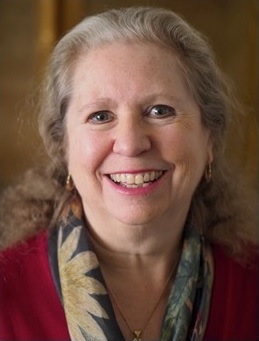 Adele Abrams, Esq., CMSP, is an attorney, a safety professional, and a trainer who is president of the Law Office of Adele L. Abrams P.C. in Beltsville, Maryland; Charleston, West Virginia; and Denver, Colorado. It’s a multi-attorney firm focusing on safety, health, and employment law nationwide. Abrams is a certified mine safety professional, and she provides consultation, safety audits, and training services to MSHA- and OSHA-regulated companies. Adele Abrams, Esq., CMSP, is an attorney, a safety professional, and a trainer who is president of the Law Office of Adele L. Abrams P.C. in Beltsville, Maryland; Charleston, West Virginia; and Denver, Colorado. It’s a multi-attorney firm focusing on safety, health, and employment law nationwide. Abrams is a certified mine safety professional, and she provides consultation, safety audits, and training services to MSHA- and OSHA-regulated companies.
Abrams is a regular columnist and podcaster (“Ask the Safety Lawyer”) on legal, employment, mine, and occupational safety/health issues and is coauthor of several books related to mining, construction, employment law, and occupational safety and health. She is a member of the Maryland, D.C., and Pennsylvania Bars; the U.S. District Courts of Maryland, D.C., and Tennessee; the U.S. Court of Appeals, D.C., 3rd, and 4th Circuits; and the U.S. Supreme Court. She is a graduate of the George Washington University’s National Law Center and earned her BS in Journalism from the University of Maryland, College Park. Her professional memberships include the ASSP; the NSC; the National Stone, Sand & Gravel Association; Associated Builders and Contractors; the Industrial Minerals Association-North America; and the American Bar Association. In 2017, she received the NSC’s Distinguished Service to Safety Award. She is a multiple recipient of the ASSP’s Safety Professional of the Year Award. |
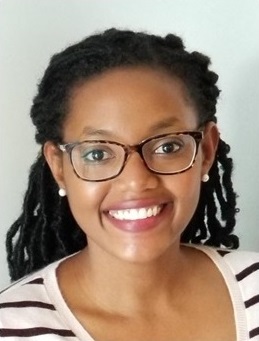 Lindsay K. Bell, MPH, CSP, entered the EHS profession through graduate studies in public health. Initially studying environmental health, she changed her focus to health, safety, and environment after completing co-op assignments in EHS training and manufacturing operations. Bell has continued to work in manufacturing for over 5 years, specializing in safety, supply chain, and lean manufacturing. Lindsay K. Bell, MPH, CSP, entered the EHS profession through graduate studies in public health. Initially studying environmental health, she changed her focus to health, safety, and environment after completing co-op assignments in EHS training and manufacturing operations. Bell has continued to work in manufacturing for over 5 years, specializing in safety, supply chain, and lean manufacturing.
Bell is currently a Regional Health and Safety Manager at Solvay Novecare, an organization developing leading-edge technologies that affect the behavior of fluids to give them cleansing, softening, moisturizing, hydrating, gelling, texturizing, penetrating, or dispersing properties. Its products are found in shampoos, detergents, paints, lubricants, plant protection, mining, and oil extraction. Novecare relies on a global network of 3,000 employees, 28 production sites, and 10 R&I centers and labs that develop innovative solutions to sustainable development issues. Novecare’s biggest safety issue is chemical/thermal exposures resulting from line breaking and flex hose transfer activities. |
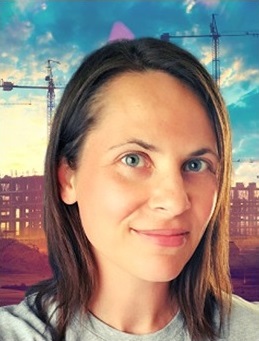 Abby Ferri, CSP, is a practical, a creative, and an influential safety and risk management consultant, podcaster, and author. She leverages social media, voice, and the latest technology to advocate for worker safety and equity. Her years in construction prepared her for any industry, and her innovative approach has impacted thousands of workers, students, and safety peers worldwide. Learn more about Ferri at abbyferri.com. Abby Ferri, CSP, is a practical, a creative, and an influential safety and risk management consultant, podcaster, and author. She leverages social media, voice, and the latest technology to advocate for worker safety and equity. Her years in construction prepared her for any industry, and her innovative approach has impacted thousands of workers, students, and safety peers worldwide. Learn more about Ferri at abbyferri.com. |
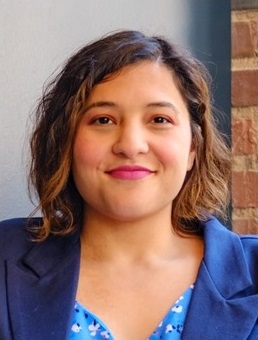 Camille Oakes, CSP, SMS, CIT, is a safety professional with 14 years of experience in a multitude of industries, including logistics and supply chain, government, and military. Camille Oakes, CSP, SMS, CIT, is a safety professional with 14 years of experience in a multitude of industries, including logistics and supply chain, government, and military.
As the founder and CEO of Better Safety, Oakes consults with companies to employ better training, a better culture, and better business practices by developing their safety professionals and improving their safety performance. Oakes conducts safety leadership training for operations leaders. She also works to enhance the safety profession through speaking engagements and workshops that include sales techniques, presentational skills, preparation, and communicating with nonsafety professionals. Oakes holds a master’s degree in Advanced Safety and Engineering Management from the University of Alabama at Birmingham. She is a Past President of the Georgia Chapter of the ASSP and an incoming Assistant Administrator of WISE. She is passionate about the communication and engagement of all levels of an organization to enhance its safety management system. |
EHS on Tap is an EHS podcast by BLR’s EHS Daily Advisor. On each episode of EHS on Tap, our host will discuss emerging legal, regulatory, and policy issues with industry experts and the impacts to everyday safety and environmental professionals. EHS on Tap topics run the gamut of contemporary issues facing EHS managers and professionals today.
You can find and subscribe to our podcasts on Spotify, Amazon Music, Google Play, and iTunes, and also be sure to visit our SoundCloud page for a full listing of all of our episodes!


